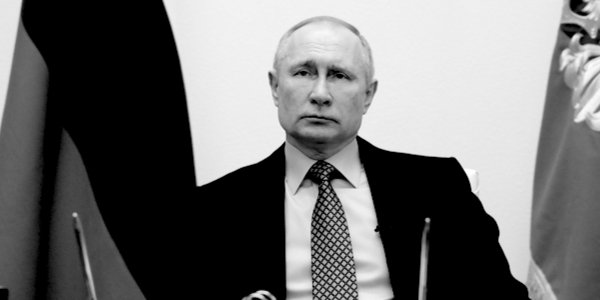PRESIDENT Trump said last week that the US would impose 100 per cent tariffs as secondary economic sanctions on countries that trade with Russia if Moscow does not agree to a ceasefire in Ukraine within the following 50 days. He also said ‘billions of dollars’ worth of military equipment’ would be purchased from the US by Nato allies, though few details exist as to just when and what volume and type of weaponry and ammunition would be delivered and when.
The US threat to sanction key Russian commodity importers such as China, India, Turkey and Brazil is rather improbable. To all intents and purposes, the 50-day ultimatum is expected to fizzle out. Trump may well have adopted the least-bad solution to outflank the pressure he’s been receiving from the war hawks in Congress. He had to show a response to President Putin’s destructive aerial attacks on Ukraine over the past two weeks.
The grand strategy of American neoconservatives, inspired by Zbigniew Brzezinski’s vision in The Grand Chessboard (1997), aimed to secure US unipolar hegemony by severing the economic bond between a resource-rich Russia and manufacturing powerhouse Germany in the Eurasian landmass. By rendering Europe a geopolitical vassal, dependent on American energy and security, the US could maintain global dominance.
This blueprint was illustrated by a 2019 RAND Corporation study which explicitly outlined a strategy using Ukraine to weaken Russia through prolonged conflict. The 2008 Nato pledge to include Ukraine and Georgia, despite Moscow’s warnings, set the stage for confrontation. Victoria Nuland’s role in the 2014 Maidan coup, ousting pro-Russian President Viktor Yanukovych, was a pivotal step in turning Ukraine into a Western-aligned proxy. The 2022 Russian invasion of Ukraine, provoked by Nato’s encroachment, played into this strategy, with the US and EU arming ‘democratic’ Ukraine to ‘bleed Russia dry’.
The provocations were pursued despite the warnings by America’s own diplomats such as George Kennan and William Burns and academics including John Mearsheimer, who spoke against leading Ukraine down the ‘primrose path’ to self-annihilation. The neocon gambit has backfired spectacularly.
EU Baltic leaders such as Estonia’s Kaja Kallas support this aggressive stance. Ms Kallas, now the EU High Representative for Foreign Affairs and Security Policy, is considered by some to be the Europe’s most dangerous and incompetent diplomat, calling for Putin’s total isolation. She refuses all diplomatic means to resolve the Ukraine war, and instead seeks the break-up of Russia into small statelets.
After countless sanctions, Russia largely redirected its energy exports to Asia to counter the loss of European markets. Meanwhile, the EU, propped up by the anti-Russia posture of Brussels, is fracturing as ordinary citizens reject endless war, mass migration and a costly climate agenda, fuelling populist challenges to its out-of-touch leadership.
Russia’s resilience and the global South’s resistance to Western dictates was underestimated. The sanctions regime (the EU is on its 18th sanctions package), with more than 14,000 measures by 2024, froze Russia’s $300billion in foreign reserves held in Western banks, blocked access to the SWIFT international payments system, and sanctioned its oil and gas exports to the EU. The aim was to collapse the rouble, devastate Russia’s economy and oust Putin.
Instead, the sanctions boomeranged. Russia’s status as a ‘full-spectrum commodity superpower’ made it less vulnerable than Europe itself, the initiator of the sanctions. Russia leads global exports in oil, gas, wheat, fertilisers and industrial metals. Most critically, Russia is a heavyweight fossil-fuel exporter in world markets. It is the world’s largest natural gas exporter, the second largest oil exporter and the third largest coal exporter.
By April 2022, Russian oil exports returned to pre-invasion levels, with India and China filling the gap left by Western buyers. Russia recorded a current account surplus of $62.3billion for the full year of 2024, a 26 per cent increase from the previous year.
Europe, conversely, has borne the brunt. Germany, Europe’s economic powerhouse, faces recession and de-industrialisation. Germany’s had a GDP growth rate of zero in 2024, making it the weakest performer among major economies. Russia’s counter-sanctions on EU agricultural imports boosted its own food production, while Europe grappled with food and fertiliser shortages. The Nord Stream sabotage, far from isolating Russia, left Europe energy-poor, with German officials advising citizens to skip hot baths.
The EU’s political class, centred in Brussels, has staked its unity on an anti-Russia posture, endless support for Ukraine, mass migration and a Malthusian climate agenda. Yet this elite consensus is increasingly divorced from ordinary Europeans, who face energy poverty, economic stagnation and cultural dislocation. These policies have fuelled increasingly popular nationalist-conservative parties.
China is the top customer for Russian oil, buying at least two million barrels per day (bpd). India is not far behind with 1.8million bpd. Combined, they are taking over 85 per cent of price-discounted Russian oil. Despite sanctions and three years into the war, the EU is still a major importer of Russian oil and gas. EU imports of Russian fossil fuels remain largely unchanged, totalling €21.9billion, merely a one per cent year-on-year drop in volumes. Ironically, EU imports of Russian fossil fuels in the third year of the invasion surpassed €18.7billion of financial aid they sent to Ukraine in 2024.
It is doubtful that the Trump administration, at the end of its 50-day deadline, would seriously attempt to impose 100 per cent tariffs on China, India and other key importers of Russian commodities. At a time when the US is already having difficult bilateral trade negotiations with key partners, the 50-day ultimatum will only worsen the global trade outlook. This can only hurt America. After Trump issued his ultimatum, Russia’s stock market rose 2.7 per cent, and the value of the rouble strengthened relative to the dollar.
Reuters reported that Moscow will continue its military operations in Ukraine until the West engages on its terms for peace. Putin is ‘unfazed’ by Trump’s threats of tougher secondary sanctions. Putin’s conditions for peace include a legally binding pledge that Nato will not expand eastwards, Ukrainian neutrality, protection for Russian speakers who live there, and acceptance of Russia’s territorial gains in the four oblasts it has claimed.
The neocon dream of a unipolar world is not merely fading: it is perversely being dismantled by the very strategies meant to preserve it. Attempts to isolate Russia have instead isolated Europe. Efforts to weaken Moscow have strengthened its ties with China, India and the Global South. Efforts to control energy flows have driven commodity markets toward de-dollarisation among trading partners in the BRICS+ bloc.
Washington’s partners in the Global South have made their position clear: they will not be coerced into abandoning Russia for the sake of Western hegemony. Indian External Affairs Minister Subrahmanyam Jaishankar bluntly remarked in 2023 that India will pursue policies based on national interest, not Western pressure. That stance has only hardened. India Ministry of External Affairs on Thursday dismissed Nato chief Mark Rutte’s threat of ‘100 per cent secondary sanctions’, stating that India’s domestic needs depend on the current market scenario and geopolitical conditions, and warned the West against adopting any ‘double standards’.
Even if Trump’s 100 per cent tariffs are enacted at the end of the 50-day period, it seems unlikely that India or China will cave in. Both have developed parallel financial systems, local currency settlement mechanisms and commodity-based trade deals to buffer against secondary sanctions.
The world is not unipolar any more, and no ultimatum can make it so. Marco Rubio, the US Secretary of State, said earlier this year that
‘it’s not normal for the world to simply have a unipolar power . . . that was an anomaly. It was a product of the end of the Cold War, but eventually you were going to reach back to a point where you had a multipolar world, multi-great powers in different parts of the planet.’
Ultimately, Trump’s gambit may lead to a frozen conflict or even a temporary peace. But the damage to Western credibility is done. The attempt to use Ukraine as a tool to weaken Russia has instead weakened Nato cohesion, devastated Europe’s economy and exposed the limits of coercive US diplomacy in a multipolar world.
If forced, the boomerang will complete its arc back to Washington.









